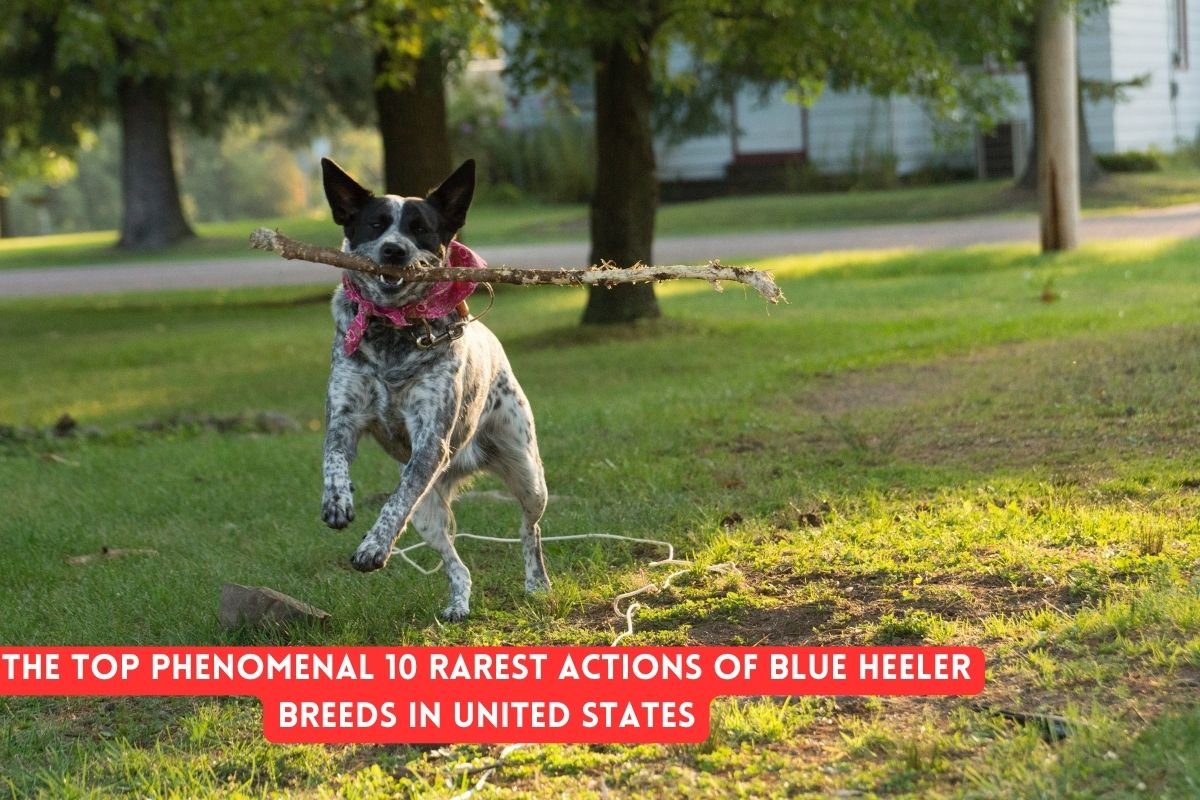Blue Heelers, also known as Australian Cattle Dogs, are renowned for their intelligence, agility, and loyalty. In the United States, they’ve become popular companions for various tasks, from herding livestock to serving as devoted family pets. Within their unique behaviors lie some exceptional actions that set them apart from other breeds. Let’s delve into the top 10 rarest actions exhibited by Blue Heeler breeds in the United States.
Precision Herding
Blue Heelers possess an innate herding instinct, honed through generations of breeding. Their ability to herd livestock with remarkable precision, often without much guidance, is a testament to their exceptional intelligence and natural instincts.
Problem-Solving Skills
These breeds showcase remarkable problem-solving abilities, allowing them to navigate complex situations with ease. Whether it’s figuring out how to open a gate or finding alternative routes during herding, Blue Heelers demonstrate a level of cognitive agility that’s truly impressive.
Agility Competitions
Blue Heelers excel in agility competitions, where their athleticism, speed, and agility are put to the test. Their ability to maneuver through obstacle courses with grace and precision highlights their physical prowess and trainability.
Search and Rescue
Many Blue Heelers in the United States are trained for search and rescue missions, owing to their keen sense of smell, endurance, and unwavering determination. They play a crucial role in locating missing persons in various terrains and conditions.
Therapy Work
Despite their energetic nature, Blue Heelers exhibit a gentle and empathetic side, making them excellent candidates for therapy work. Whether it’s providing comfort to individuals in hospitals or offering support to those in distress, these breeds have a remarkable capacity for empathy.
Obedience Trials
Blue Heelers often participate in obedience trials, showcasing their ability to follow commands with precision and enthusiasm. Their eagerness to please their owners, coupled with their intelligence, makes them formidable contenders in such competitions.
Flyball Competitions
Flyball competitions, which involve teams of dogs racing against each other to retrieve a ball, are another arena where Blue Heelers shine. Their speed, agility, and drive to succeed make them valuable assets in this fast-paced sport.
Canine Freestyle Dancing
Blue Heelers exhibit creativity and coordination in canine freestyle dancing, a sport where dogs and their handlers perform choreographed routines to music. Their enthusiasm for learning new tricks and their natural rhythm make them excellent performers in this unique activity.
Trick Training
These breeds thrive on mental stimulation and enjoy learning new tricks, ranging from simple commands to complex behaviors. Their eagerness to engage with their owners and their quick grasp of concepts make them ideal candidates for trick training.
Service Dog Work
Blue Heelers are increasingly being trained as service dogs to assist individuals with disabilities. Their intelligence, loyalty, and versatility enable them to perform a wide range of tasks, from guiding the visually impaired to providing mobility assistance.
Conclusion
In conclusion, the Blue Heeler breeds in the United States exhibit a myriad of rare and exceptional actions that highlight their intelligence, agility, and versatility. From precision herding to service dog work, these breeds continue to impress with their remarkable abilities and unwavering dedication to their tasks.
FAQs
Are Blue Heelers good family pets?
Yes, Blue Heelers can make excellent family pets, provided they receive proper training, socialization, and plenty of mental and physical exercise.
Do Blue Heelers require a lot of exercise?
Yes, Blue Heelers are an energetic breed that requires regular exercise to stay healthy and happy. Daily walks, playtime, and mental stimulation are essential for their well-being.
Are Blue Heelers aggressive?
Blue Heelers can exhibit territorial and protective behaviors if not properly trained and socialized. Early socialization and positive reinforcement training are key to preventing aggression.
Do Blue Heelers shed a lot?
Yes, Blue Heelers have a dense double coat that sheds moderately year-round. Regular grooming, including brushing and occasional baths, can help manage shedding.
What is the average lifespan of a Blue Heeler?
The average lifespan of a Blue Heeler is around 12 to 15 years, although with proper care and nutrition, some individuals may live longer.
